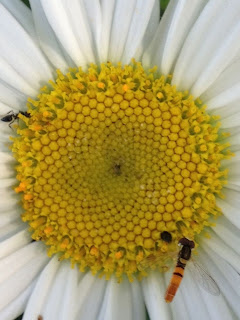Hi Boys and Girls,
Have you ever heard the expression, "Don't cross the line or that's way over the line?"
If so, what could it mean? Does it literally mean to 'not walk or move beyond a line,' as when perhaps you are playing a game? Or could it mean not to behave in an inappropriate manner when engaged in a conversation? Or not to follow the decorum expected within a school environment, or within the realm of our society?
So, one could ask," Do humans cross that line?" Most definitely; at times for the good, at times for the bad!
The issue of lines is rather profound when you consider it.
First, consider the earth and every land mass on it.
Does it have naturally occurring lines to distinguish aspects of its land formations? No, not really, at least not in the way I am considering this question.
Man may place lines at select locations to delineate, let's say a country's boundary which is most typically found in political maps.
 |
| Authentic political world map, but beware, lines keep shifting and changing! Oh MY! |
 |
| A fictitious map from Lands Beyond, The Phantom Tollbooth by Norton Juster |
So, let's imagine a world without lines. What would it be like to live in an open, free-moving globe where one can simply travel across these invisible lines? To travel anywhere within the globe without red tape, but instead possess an open passport, so to speak.
What are the benefits of such an open global society? Are there disadvantages? If so, what are they? What would it take to achieve such a life? What concessions would mankind have to make? Have we evolved as a species to embrace this open lifestyle? Why or why not?
Who would want to see this happen? Who would not? Why?
Next, let's take a look at our man-made neighborhood environments. You will find that lines abound, some naturally occurring, some not. Here are just a few images to think about:
"Rain Room" at the Museum of Modern Art, the destination for visitors who LINE Up for hours.
Timothy Clark/Agence France-Presse--Getty Images NYT
What lines do you see in the Rain Room? What direction do they go in? Do you see them collect above the man's face? Or is it an illusion? See the lines within the grates? Note the direction they move in? Again, an illusion? Why? How? When? What purpose do they serve?Timothy Clark/Agence France-Presse--Getty Images NYT
 |
| Note, straight lines are used to create a circle. What else can you see? ©2013Belle Mead, NJ JMW |
"Can you read between the lines?" Which means can you draw a conclusion regarding an issue without it being deliberately stated?
"Walk in a line" and so many more expressions exist with the word, "line." What are they? Where are they useful? When are they limiting?
Finally, let's look at lines in nature. Look closely at all forms of life and you will see nature at its finest:
The farmer cuts the wheat in straight lines
©2013Belle Mead, NJ JMW
What lines do you see here?
Eastern Swallowtail Butterfly in grass,
What line arrangement do you notice?
©2013Belle Mead, NJ JMW
 |
| Plants grow upwards, in linear fashion ©2013Belle Mead, NJ JMW |
.JPG) |
| Note perfectly spaced tree-line, the line of Belgium blocks set block by block, the slabs of concrete, almost reminiscent of The Happy Medium, from a Wrinkle in Time ©2013Belle Mead, NJ JMW |
Then there are crooked lines as in the Col de Manse:
 |
| Terraced lines, Bora Bora, French Polynesia |
 |
| Lines in asphalt, both straight and crooked ©2013Belle Mead, NJ JMW |
 |
| Note, the natural progression of nature to fill any viable space in which it can flourish, including lines ©2013Belle Mead, NJ JMW |
Clearly, some lines are pretty, some are not, some are man-made, some are naturally occurring.
So, if we took away lines, would it give order to a disorderly universe, or do the lines create disorder in an orderly universe? You decide. But whatever you do, remember, "Do not cross the line!"
Be well kids!
The Teach.


















.JPG)
.JPG)
.JPG)
.JPG)
.JPG)













